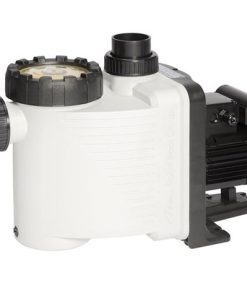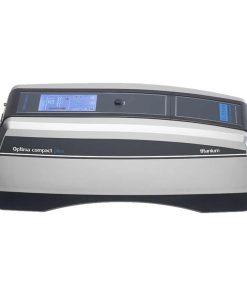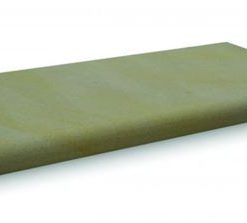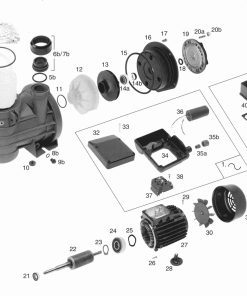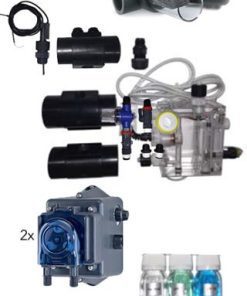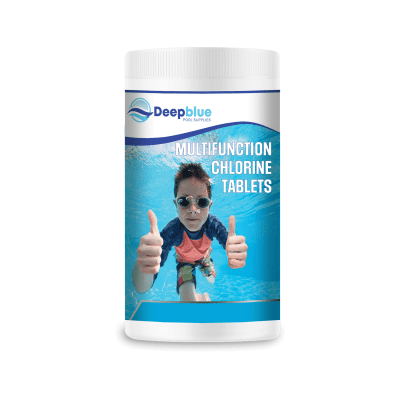Hottub, Swimming Pool
The Importance of Water Quality Testing in Spa Pools and Hot Tubs
Spa Pools and Hot Tubs require Water Quality Testing to be important
Water quality maintenance in your spa pool or hot tub determines both safety and enjoyment of its use. When this aspect is ignored it creates conditions for dangerous bacteria and microorganisms to multiply which threatens your health together with the health of your family or visitors. Regular water quality assessments remain the only method to stop this issue and create a healthy environment for your spa. The following article explores the necessity of water quality testing in spa pools through references to HSE document HSG282 [1, 30] to guide you through spa water testing procedures.
Why is Water Quality Testing Necessary?
Spa pools become vulnerable to water quality problems because of several different elements [4]:
Hot water temperatures between 30–40 °C create conditions that bacteria thrive in [3, 4].
The human body releases organic substances such as sweat and skin cells and hair when bathing which serve as nutrients for microbial development [6, 7].
The water recirculation system of the spa pool allows bacterial populations to expand when treatment protocols are inadequate [4].
Aerosols produced by air jets create conditions which allow dangerous microorganisms to become airborne [3, 5].
The process of regular water inspections provides both preventative control of health risks and active management of water conditions. Through this procedure you can monitor the chemical composition of water while adjusting it for proper disinfection effectiveness.
What to Test For?
The HSE recommends regular testing of the following parameters according to guidelines [17, 31]:
The proper management of pH levels between 7.0–7.6 proves necessary for successful disinfectant operations [29].
The disinfectant levels need to be monitored for free chlorine at 3-5 mg/l or total active bromine at 4-6 mg/l for microbial control [32].
The level of Combined Chlorine should remain under 1mg/l in order to prevent skin irritation [32].
The fill water TDS levels should be increased by less than 1000 mg/l [33].
The microbiological assessment requires regular testing of ACC bacteria and coliforms alongside E coli and P aeruginosa and legionella [18, 34].
How to Test the Water?
Pool-side testing kits provide an easy way for people to perform water testing. The more detailed examination of water samples requires qualified experts to run tests in laboratories [35]. The following presents both testing approaches in detail:
Poolside Testing: The use of testing strips or liquid testing kits allows users to determine pH values and disinfectant concentrations and additional chemical elements. The tests are well suited for regular monitoring which spa owners can perform [36].
A UKAS accredited laboratory requires water samples to conduct microbiological analysis [37, 38]. Home testing kits fail to detect certain harmful bacteria which makes laboratory testing essential for their identification.
Frequency of Testing
The testing schedule for spa facilities depends on whether the spa operates as a business or for residential use:
Regular chemical tests should be performed daily or every two hours while the commercial spa operates. The spa operator needs to perform microbiological tests at least once per month. The recommended testing interval for Legionella bacteria is once per quarter [17, 22].
Domestic hot tub owners should conduct regular testing but at lower frequencies than what commercial facilities do. Chemical assessments should be done twice daily and microbiological tests need to be conducted monthly with additional legionella checks performed every quarter.
Interpreting Results
You need to comprehend your water test outcomes so you can properly respond to them. For example:
High pH: Adjust using an acid product, and retest.
Low Disinfectant: A shock dose of disinfectant should be added followed by a retest.
High TDS: Drain and refill the spa pool.
The spa should be shut down for maintenance while you perform cleaning and disinfection before conducting another test. Professional assistance becomes necessary when problems do not resolve themselves [39].
Key Takeaway
Water quality testing on a regular basis protects spa pools from dangerous microorganisms while ensuring pool safety. Following these testing protocols enables you to maintain a spa environment that is both healthy and enjoyable.
Keywords: Spa Water Testing, Hot Tub Water Quality, Pool Water Chemistry, Legionella Testing, Water Disinfection, Spa Safety
FAQs
At what frequency must I perform tests on my spa water?
Commercial spas require daily or two-hourly chemical testing. The testing frequency for microbiology should be monthly with regular legionella tests scheduled for every quarter. Owners of domestic spas need to check chemical balance twice daily and perform microbiological tests once per month along with quarterly legionella assessments [17, 22].
The proper pH range for your spa should be between 7.0 and 7.6.
The pH value of your spa needs to stay between 7.0 and 7.6 [29].
To determine disinfectant levels in a spa pool what methods can I use?
The disinfectant level in pool water can be evaluated through pool-side test strips and liquid testing kits as well as DPD1 chemical reagent [36, 40].
Why does my business require a UKAS accredited laboratory and what is its meaning?
A UKAS accredited laboratory fulfills particular requirements for quality standards. Testing for harmful bacteria including legionella requires accurate and reliable results thus making UKAS accredited laboratories essential [37].
What steps should I take after my test reveals contamination?
When bacterial levels become excessive in your spa you must immediately shut it down while performing complete cleaning and disinfection of both pool and equipment before conducting another test [39].


